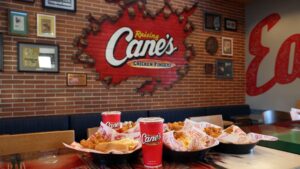Restaurant Industry 2024: Winners, Losers, and What’s Next for Consumers
The restaurant landscape has endured a tumultuous ride in 2024, with many chains facing the challenges of rising costs and heightened consumer expectations. As we delve into this complex scenario, it becomes clear that not all restaurants are created equal; some have thrived while others have struggled to stay afloat. At Extreme Investor Network, we pride ourselves on analyzing market trends to bring you valuable insights. In this post, we’ll explore the winners and losers of the restaurant industry so far this year and what the future may hold.
An Overview of the Restaurant Landscape
Consumer behavior has radically shifted over the past year. Rising food prices at restaurants, which surged by 3.6% as reported by the Labor Department, have made home-cooked meals more appealing. Grocery prices, in contrast, only increased by 1.6%. The result? Many diners are tightening their budgets and exploring alternatives, impacting restaurant traffic and sales.
Jennifer Jennings, a sales professional from Tulsa, summed it up perfectly: "I’ve been eating out less this year – it tastes just as good, and it’s way cheaper." This chorus of consumers has forced chains to innovate aggressively, launching promotions and new menu items to attract a more selective clientele.
The New Value Paradigm
Value has become the buzzword of 2024 for restaurant CEOs. Chains like McDonald’s have taken note of the changing consumer sentiment, rolling out $5 combo meals in response to decreased foot traffic. Interestingly, a recent report indicated that value menu promotions lifted foot traffic by 9% compared to the previous year.
However, value is no longer solely about price. Consumers have developed a nuanced definition that encompasses quality, experience, and even social consciousness. Michael Zuccaro of Moody’s Ratings noted, “For the low-income consumer, the dollar amount matters. For everyone else, it’s about perceived value.”
Winners of 2024
-
Value-Driven Chains: Fast-food giants and quick-service restaurants that have redefined their value propositions have fared better. Taco Bell stood out as a specific success story, reporting consistent same-store sales growth thanks to strategic marketing and product offerings, positioning itself as the most affordable limited-service chain.
-
Fast-Casual Innovators: Fast-casual establishments, like Chipotle and Wingstop, have also seen burgeoning success, led by a demographic that supports businesses emphasizing quality and experience. These businesses reported increased traffic of around 3% and dollar sales growth of 8% this year. This trend underscores an important shift towards dining options that balance quality and value.
-
Chicken Chains: Chicken-focused chains, especially Chick-fil-A and Raising Cane’s, have seized significant market share as poultry prices remain stable compared to rising beef prices. The public’s appetite for chicken has not only endured—it has flourished.
- Chili’s Comeback: Brinker International’s Chili’s has made headlines for its impressive 14.1% same-store sales growth, thanks to strategic pricing and TikTok marketing campaigns. Its "3 for Me" meal option has become a hit, showcasing the effectiveness of clever advertising in today’s digital landscape.
The Struggles of the Industry
While some have thrived, the casual dining sector has faced severe downturns. With a 2% decline in traffic year-to-date, chains like Red Lobster and TGI Fridays have filed for Chapter 11 bankruptcy—a stark reminder of the challenges presented by the ongoing shifts in dining preferences and economic pressures.
Moreover, quick-service giants like McDonald’s have faced setbacks despite their traditional dominance. An E. coli outbreak linked to their iconic Quarter Pounder caused notable drops in consumer traffic, leading to increased scrutiny and a massive marketing push to regain consumer trust.
Looking Ahead
As we approach 2025, opinions diverge on the potential recovery of the restaurant sector. Many industry experts retained a cautious sense of optimism at recent conferences, predicting that a decline in inflation could stabilize prices and consumer traffic.
Nonetheless, the value wars show no sign of abating. RJ Hottovy of Placer.ai notes that the consumer mindset that favors value-oriented and deal-driven dining experiences is likely to continue. Obtaining a share of the market will remain intensely competitive as chains adapt to maintain relevance among cost-conscious consumers.
Conclusion
The evolving dynamics of the restaurant industry in 2024 emphasize a critical takeaway for investors and consumers alike: adaptability is key. The chains that embrace innovation, understand consumer behaviors, and find ways to enhance their value proposition will be positioned for greater success. At Extreme Investor Network, we will continue to track these shifts closely, providing our readers with up-to-date insights that go beyond simple metrics and delve into the heart of market dynamics. Stay tuned for more updates, as the restaurant landscape continues to evolve!

